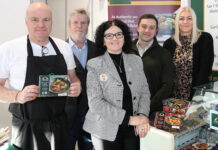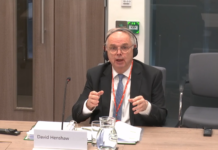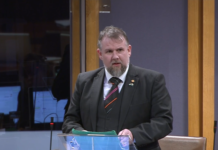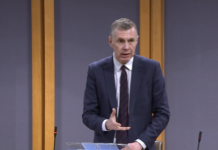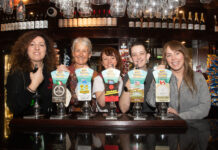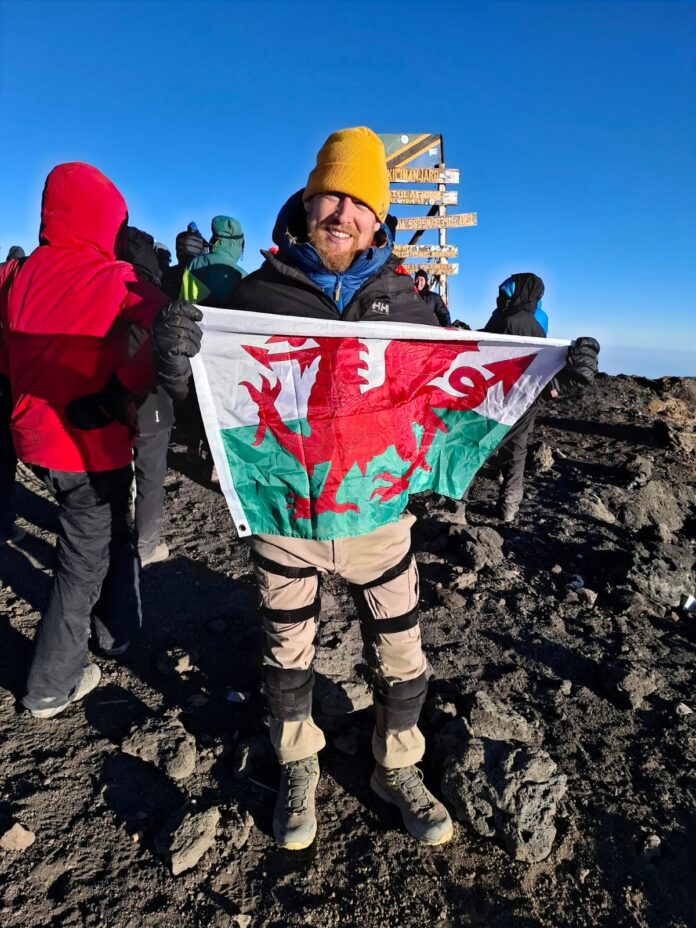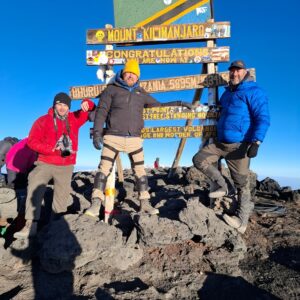A MAN who woke up paralysed has scaled Mount Kilimanjaro in his latest charity crusade.
Jamie McAnsh had already climbed Mount Everest on crutches, but he’s now tackled the African peak and raised thousands of pounds in the process.
Jamie, who has Complex Regional Pain Syndrome (CRPS), completed the challenge alongside his devoted wife Charlotte McAnsh and a team of climbers.
Reflecting on the challenge, Jamie said he had managed to reach the peak – despite his oxygen levels hitting dangerously low levels.
Speaking with
diversity training provider Champions (UK) plc, where he is Head of Inclusion, Jamie, from Cwmbran, Torfaen, said: “Overall, it went really well. When I set up to do this challenge, my goal was to offer hope for people with disabilities, to say, look, it’s possible, anything is possible.
“You’ve just got to either get the right support, and find the right method of doing it and by whatever means. That’s what this is about.
“I went up the Lemosho route, I scaled the Barranco Wall, and eventually I summited. This was all massively challenging, and I wouldn’t have been able to do that if I’d been in a wheelchair or on crutches. But that doesn’t mean it’s not possible to do it in a wheelchair, or on crutches. You’ve got to take a different route, and you’ve just got to plan it a different way, which is possible.”
He continued: “I’m South African born. So for me, it was going back to my birth continent, and I scaled the highest free-standing mountain in the world, the highest mountain in Africa.
“It was huge. I know I’ve done Everest base camp, but this one was different, it was incredible. I’m hoping that the end message is what’s going to come out of it. That message of hope, that message of overcoming adversity. That’s what I really want to see come out of this.”
Jamie utilised Composite Carbon Fibre KAFOS made from flexible composite carbon on the expedition. Supplied by Thuasne, a French health solutions company who serve ‘the mobility of today’s patients’, the orthotics allowed for increased mobility and ease of pain which is crucial for someone with CRPS attempting such a feat.
Despite thousands each year attempting to scale ‘The Roof of Africa’, many fail to reach its summit. The expedition is a challenging test of both physical and mental endurance, with an ever-adapting climate which can take its toll on many who make the journey.
Discussing the main challenges, Jamie, who was recently voted in the
top 15 best UK motivational Speakers , continued: “Seven of us started. Three of us summited to Kilimanjaro Summit, and one made to Stella Point. Three of them didn’t make it all the way. So, morale was always a challenge.
“Tiredness, fatigue. Temperature, extreme temperature. You were hitting plus 24 Celsius in the day, minus 16 at night. These are extreme temperature changes.
“The Barranca Wall, which was a 220m vertical climb, that was a hell of a challenge. You’re having to climb over gaps and scale up rock face. That was definitely challenging, but summit day was by far the hardest thing I’ve ever done. You’re climbing up what can only be described as a sand dune or like a big pile of chippings for 10 hours.
“That’s extreme. I mean, the pressure that’s putting on your body, and you’re doing it in pitch blackness as well just to top it off.
“So you’re fatigued, you’re exhausted. We went up 1200m at an almost vertical kind of ascent. And then what goes up has to come down. You’re almost skiing down off the mountain on this loose gravel and on a set of legs that I’d effectively never used for that stuff before. No one has ever done it.
“No one knew how that was going to go. So that was extremely challenging, but successful. We got there. We did it.”
He continued: “My wife, Charlott, (corr) joined me on the summit attempt. As the team progressed, it became clear that our pace was uneven, so we split into two groups – a faster team and a slower team, with Charlott in the latter.
“As the night wore on, Charlott began to feel extremely cold and asked our guide, Chumbo, if she could stop to add another layer of clothing. Chumbo, noticing something was wrong, checked her oxygen levels, which had dangerously dropped to 52%. With levels below 60% being considered a medical emergency, and 50% life-threatening, Charlott was in serious danger.
“She was quickly rushed down the mountain, a decision that undoubtedly saved her life. I had always reminded her that being stubborn on the mountain could mean the difference between life and death. Though Charlott didn’t make it to the summit, stopping at 5,400 meters, she still reached an impressive height, pushing her limits and achieving something incredible.
“What made her accomplishment even greater was that she listened to her body and her guide, a decision that not only saved her life but made her success all the more meaningful.”
In his current role as Head of Inclusion at Champions (UK) plc, Jamie helps businesses enhance their EDI levels, promoting modern practices to ensure all societal groups are represented in workforces.
The 43-year-old utilises his personal experiences within disability and neurodiversity to offer insights into how the industry can better suit those who need help. EDI consultancy played a large role in Jamie’s decision to commit to the expedition.
“When I’m in my wheelchair, people underestimate me,” he explained. “When they see my carbon fibre legs, I feel sometimes that people underestimate my capabilities. I’ve just climbed a mountain on these legs – people underestimate my brain capacity over my physical capacity.
“I think that this is a common reaction. So from an EDI point of view, if I can climb to the top of Africa, then surely it is time we sat down and looked at disabilities and said ‘let’s not worry about what you can’t do, because you can’t do it, and that’s fine. Let’s really invest in what you can do, and then let’s build a process around that.’
“It’s really a case of: ‘this guy climbed Kilimanjaro. What else can he do? What else is possible?’ And it’s the same as going: ‘this person’s neurodiverse, but that doesn’t mean that they’re not super intelligent.’ Quite often, they have other skills and other skill sets. Someone who’s autistic is often hyper focused on certain areas. What is that certain area, and can you utilise those skill sets?”
He continued: “People don’t look at disabilities as a skill set, but it is a skill set. I’ve spent my life overcoming stuff, problem solving, fixing things, figuring out how to do things that everyone else finds complicated.
“I simplify it. So my disability is massively my skill set, and I think organisations will do really, really well if they start looking at disabilities as a set of skills rather than a setback.”
Jamie has achieved numerous feats throughout his life despite setbacks. Kilimanjaro’s summit acts as the centrepiece of extreme highs and lows for the 43-year-old, yet he continues to look forward to the next challenge.
“This was by far the hardest thing I’ve ever attempted or achieved,” he commented, when asked where this expedition ranks in achievements. “I’ve done some pretty crazy stuff to compare it to, but this was by far the hardest thing I’ve ever done.
Help keep news FREE for our readers
Supporting your local community newspaper/online news outlet is crucial now more than ever. If you believe in independent journalism, then consider making a valuable contribution by making a one-time or monthly donation. We operate in rural areas where providing unbiased news can be challenging. Read More About Supporting The West Wales Chronicle











